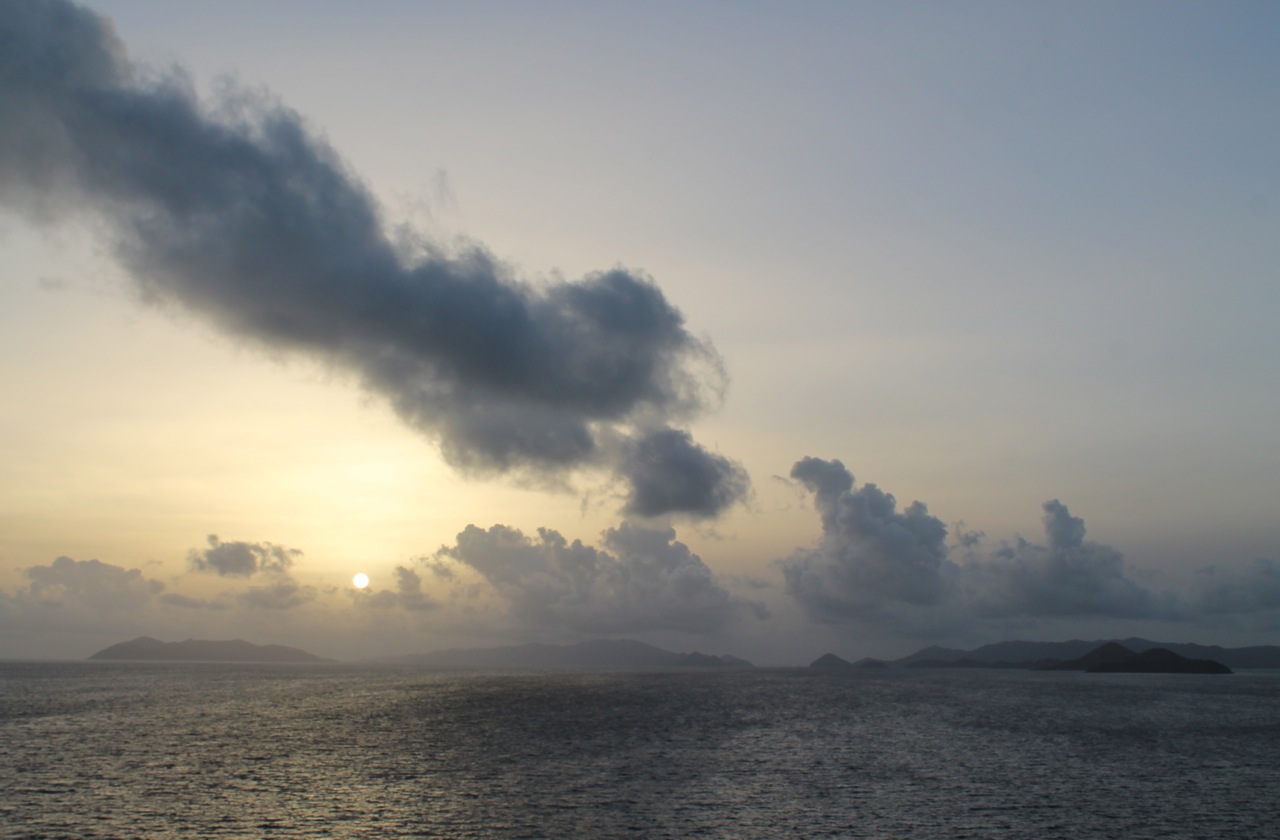On a long journey of human life, faith is the best of companions; it is the best refreshment on the journey; and it is the greatest property.
~ Buddha
Our weathermen say we are in for a spectacular weekend. A big plume of saraha dust is making it’s way across the Atlantic, leaving us with dry and hazy conditions. I think it was the dust in the air that allowed for that gorgeous sunset last evening! Very rarely does the setting sun’s rays project that far to the east from my vantage point!
So I was thinking this morning about a beautiful painting a friend created yesterday. She took up her spiritual readings, and the inspiration was magnificent. She painted a beautiful picture of a row boat along the shoreline, with little crabs on the beach, palm trees in the background.
It immediately brought to mind the Buddha’s parable of the boat. I’m actually surprised I have not written about it before, for it is one of the most famous. It is a story I contemplate daily, as I look at my computer desktop picture, The Buddha in the Rain. There is a boat waiting to take him across …
Buddha’s Parable of the Boat (Raft/FerryBoat):
————-
A man is trapped on one side of a river. On this side, there is great danger and uncertainty and on the far side of the river is safety. However there is no bridge spanning the river nor is there a ferry to cross over. What to do?
The man gathers together logs, leaves, and creepers and by his wit fashions a raft from these materials. By lying on the raft and using his hands and feet as paddles he manages to cross the river from the dangerous side to the side of safety.
The Buddha then asks the listeners a question. What would you think if the man, having crossed over the river thought to himself – That raft has served me well I will carry it on my back over the land now?
The monks replied that it would not be a very sensible idea to cling to the raft in such a way.
The Buddha went on – What if he lay the raft down gratefully thinking that this raft has served him well but is no longer of use and can thus be laid down upon the shore?
The monks replied that this would be the proper attitude.
The Buddha concluded by saying – So it is with my teachings as well. They are like a raft and are for crossing over with not for seizing hold of.
————
Buddha has been quoted as saying:
“Embrace nothing: If you meet the Buddha, kill the Buddha. If you meet your father, kill your father. Only live your life as it is, Not bound to anything.”
This parable marks the attitude taken to the teachings given by the Buddha, that we must always bear in mind that the teachings, even the story of the Life of the Buddha are only descriptions, symbols pointing to something beyond the words. Their prime objective is to be of practical use and secondly to introduce the teaching of the Two Truths. The ultimate Truth or Reality cannot be described by words and concepts and must be seen for oneself. However the path that leads to that insight can be described and forms a map to show how to get there. This truth is relative because it only describes the way to this Truth. It is not the Truth itself nor is it the path itself. The practitioner must walk this path; it is not enough just to read about it or even to believe that it works!
Buddha notes:
“There are only two mistakes one can make along the road to truth;
not going all the way, and not starting.”
So congrats friend, for resuming your journey. May faith always be your companion and great inspiration.
Have a blessed Friday, and a joyous weekend everyone ❤
Source: http://www.thebuddhistsociety.org/resources/previous_stories/Map.htm


